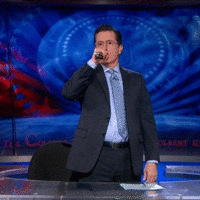It was cheaper then! Only two parks instead of four. Equipment was new and maintenance was less costly. There was a need and a demand to connect the two that no longer exists. (at the time all tickets were park hoppers, no single park tickets) They didn't have the intricate bus system that exists now (pretty much all that existed were the Monorail resorts) It fit in, at the time, with the futuristic theme of EPCOT Ctr.
At the time, just about everyone went through TTC to get to MK. There were no direct buses to the resorts, there weren't that many other places on property where other people even stayed. (the other places that were considered on property were over by DtD and the golf resort areas. The campground was connected via boat. People that came in to the parks either parked at TTC to travel between MK and EPCOT or they parked at EPCOT and hopped to MK. It was one or the other. The turning point was probably when they got the bill to build the line from MK to EPCOT. That probably screamed about the rising cost of doing that form of transportation and the decision was made back then to just not go any further. They discussed it a few times since then, but, still haven't been able to seriously consider it.
let me point out that at that time Disney was in big trouble with the EPCOT property, thats why you have the Swan and Dolphin not Disney property. Also it was not cheaper, the interest rates at that time soared and it was expensive to build and finance construction projects. The economy basically was in deep trouble. If there was ever a time to scale back a project and not do a monorail expansion they had all of the reasons at that time.
This is a great time to finance construction with rates as low as I have ever seen them in my adult life. Money is cheap right now, if you are going to construct this would be the time to do it.
WIKI------------------------
By 1979, inflation reached a startling 11.3% and in 1980 soared to 13.5%.[2][12]
A brief recession occurred in 1980. Several key industries including housing, steel manufacturing and automobiles experienced a downturn from which they did not recover through the end of the next recession. Many of the economic sectors that supplied these basic industries were also hard-hit.[13] Each period of high unemployment was caused by the Federal Reserve, as it substantially increased interest rates to reduce high inflation; each time, once inflation fell and interest rates were lowered, unemployment slowly fell.[14]
Determined to wring inflation out of the economy, Federal Reserve chairman Paul Volcker slowed the rate of growth of the money supply and raised interest rates. The federal funds rate, which was about 11% in 1979, rose to 20% by June 1981. The prime interest rate, a highly important economic measure, eventually reached 21.5% in June 1982.[4][15]
Last edited:

